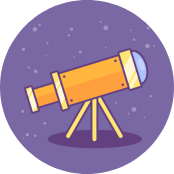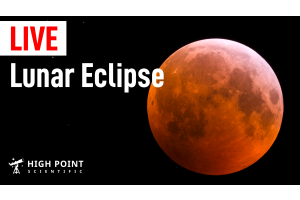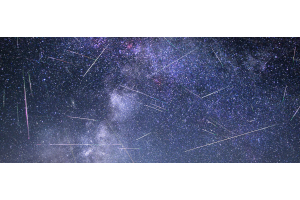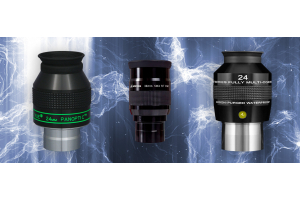
Everyone keeps their eye on the weather. It’s probably hard-coded into our DNA - after all, extreme weather could cost you your life - but astronomers and astrophotographers take a particular interest, as just a few clouds can easily curtail an evening under the stars.
Our needs are pretty specific, too. It’s not enough to know if the sky will be devoid of clouds; we also need to know about the conditions that aren’t so obvious. What’s the transparency like? Will the view be steady, or will it waver?
Little wonder that there are a number of apps available that can help you gauge your chances of being under the stars tonight. We’ll take a look at the top five apps available for both Android and iOS, and compare the features of each.
(Note: Scope Nights is a very popular choice for iOS devices, but there is no Android version available. You can learn more about the app here, or you can try it for yourself by downloading it from the App Store.)
Comparing The Features
Ultimately, choosing the right app for your device will probably come down to the features you’re looking for and how the information is presented. For example, in terms of weather, each one has temperature, wind speed, humidity, dew point, and probability of precipitation, while also providing the bare essentials for astronomy, such as the rising and setting times of the Sun and Moon.
Beyond this, they each provide additional information, which you may or may not find useful. For example, most include current information on the visibility of the planets or the ISS. You’ll also find that each app presents its information differently, so it’s worth taking a little time to determine which one works best for you.
You should also test each app to see which one most accurately matches the observed conditions. Many apps will use different sources of weather data for their predictions, and the location of the weather station providing that data could be miles away. Even if several apps use the same weather station, they might interpret the data differently.
As such, one app might promise clear skies and excellent observing conditions, while another might provide a less-than-optimistic forecast!
Lastly, while all are free to use, most will include the occasional ad or features that require a one-time payment or subscription. However, all the features listed below are accessible for free.
| Feature | Astrospheric | Astroweather | Clear Outside | Good To Stargaze | Ouranos |
|---|---|---|---|---|---|
| Simple at-a-glance indicator of sky conditions | N | N | N | Y | Y |
| Graphical depiction of upcoming sky conditions | Y | Y | Y | Y | Y |
| Current and future seeing conditions | Y | Y | N | Y | Y |
| Current and future transparency conditions | Y | Y | N | Y | N |
| Sunrise/sunset times | Y | Y | Y | Y | Y |
| Darkness times | N | N | N | N | Y |
| Moonrise/set times | Y | Y | Y | N | Y |
| Current moon phase information | Y | Y | Y | Y | Y |
| Planet visibility | Y | Y | N | Y | Y |
| ISS visibility | Y | Y | Y | N | N |
| Weather map | Y | N | N | Y | N |
| Wind chill (“feels like”) | N | N | Y | Y | N |
| Multiple saved locations | Y | Y | Y | N | N |
| Online web access | Y | N | Y | Y | N |
Astrospheric

Of the five, Astrospheric has the most features and is consequently the most detailed. However, this level of detail means you may need to take a little time to understand what’s being presented. For starters, there’s no simple at-a-glance Yes/No summary to indicate if it’s worth setting up your equipment, and while there’s an icon to show when the ISS is visible, it isn’t immediately obvious that by tapping the icon, you’ll get a planisphere-style view of the sky showing the station’s path, plus info on timings.
That said, there is a lot of useful information, some of which you might not find elsewhere. For example, besides depicting the current phase of the Moon, you’ll also see the dates (although not the times) of upcoming phases, plus any upcoming lunar eclipses. There’s also a live view of the Earth showing aurorae with an accompanying forecast for your location.
Lastly, one unique feature is the astronomical clock, which plots the paths of any object you specify (even with RA and declination) and depicts its altitude as a line against a 24-hour clock. The clock has segments for daylight, twilight, and night, and you can adjust the time to see its current altitude, plus how long you have until the object rises or sets.
The free version has a few minor restrictions and an ad at the bottom of the screen, while the unlimited version currently costs $2.99 a month, or $29.99 a year.
Astroweather

Another app packed with features, Astroweather aims to be an all-in-one solution for anyone hoping to spend time under the stars. Like Astrospheric, there’s no simple Yes/No answer to tell you if the conditions are good, but it’s relatively easy to use, and there appear to be no restrictions with the free version.
Besides also showing you a graphical depiction of the Moon, you’ll find rise/set graphs for the Moon and planets, a calendar of astronomical events, and satellite and radar images for your country. There are also a ton of other useful tools, such as an interactive planisphere, light pollution maps, satellite passes, links to regular weather sources, and even the ability to turn your phone into a red flashlight.
The free version has no restrictions, and you can disable the ads for a day without paying a penny. If, however, you want to go Pro and permanently disable the ads, it’ll cost you a one-time fee of $1.99 at the time of writing.
Clear Outside

Developed by a retailer in the UK as a tool for astronomers, Clear Outside suffers from a few drawbacks. For example, the temperature setting is only available in Celsius (standard for the UK), and there’s no prediction of either seeing or transparency. You’ll also find it lacks information on the planets or any other tools that might be useful (eg, an aurora prediction.)
On the plus side, it’s completely free (there are no ads), relatively easy to use, and it gives you what you need to know in terms of the Sun, Moon, and weather. You’ll also find that everything is color-coded, making it easy to see which times are best suited for observing.
Good To Stargaze

If you’re looking for an easy-to-use tool that can tell you, at a glance, pretty much everything you need to know, then Good to Stargaze might just be the app for you. The home screen features color-coded tiles for each of the key factors (eg, cloud cover, seeing, transparency, etc), plus a tile at the top that will tell you if, indeed, it is good to stargaze.
Tapping on a tile will provide a description and allow you to customize the settings. For example, by default, cloud cover of 25% or less is acceptable, but if you want it set to 10%, you only need to adjust the slider.
While the app as a whole is easy for a beginner to use, it’s also worth noting that seeing is given in terms of arcseconds, while transparency is given as mag/airmass, as opposed to a general rating (ie, “Excellent” or “Above Average”) which might have been easier for beginners to understand.
On the downside, there isn’t much beyond the current weather information; there’s basic information about the Moon and planets, but none of the additional features you might find in either Astrospheric or Astroweather.
Lastly, there are several subscription tiers which will give you access to the following features:
- Value: one favorite location, an hourly forecast for the next 24 hours, and charts depicting changing conditions during that time ($0.99 a month or $6.49 a year.)
- Hobbyist: five favorite locations, hourly forecasts for the next 7 days, and charts depicting changing conditions during that time ($3.99 a month or $25.99 a year.)
- Professional: ten favorite locations, hourly forecasts for the next 15 days, and charts depicting changing conditions during that time ($6.99 a month or $54.99 a year.)
Ouranos

A relative newcomer, Ouranos is similar to Good to Stargaze in that it offers an at-a-glance summary of the current conditions, but while it includes a rating for seeing (from 1 to 5, with 5 being the best), there’s no similar rating for transparency. This seems like an odd oversight, and hopefully, one that will be amended with future releases.
On the plus side, there’s an easy-to-read hourly, color-coded forecast table with the key information for the next 24 hours, as well as a graph with a slider for the same time frame. The free version also features basic info on the planets (Above/Below Horizon, plus rising or setting time) and a news feed that includes basic astronomical events (phases of the Moon, oppositions etc.)
Subscribe for €1.99 a month or €21.99 a year (roughly $2.05 a month or $22.63 a year), and you’ll also get access to a 16-day hourly forecast, forecast updates every 15 minutes, planet visibility graphs, more than 500 astronomical events, and an interactive light pollution map.

Learn More
Interested in diving deeper into the world of astronomy and astrophotography? Not sure where to begin? Check out our Astronomy Hub!







